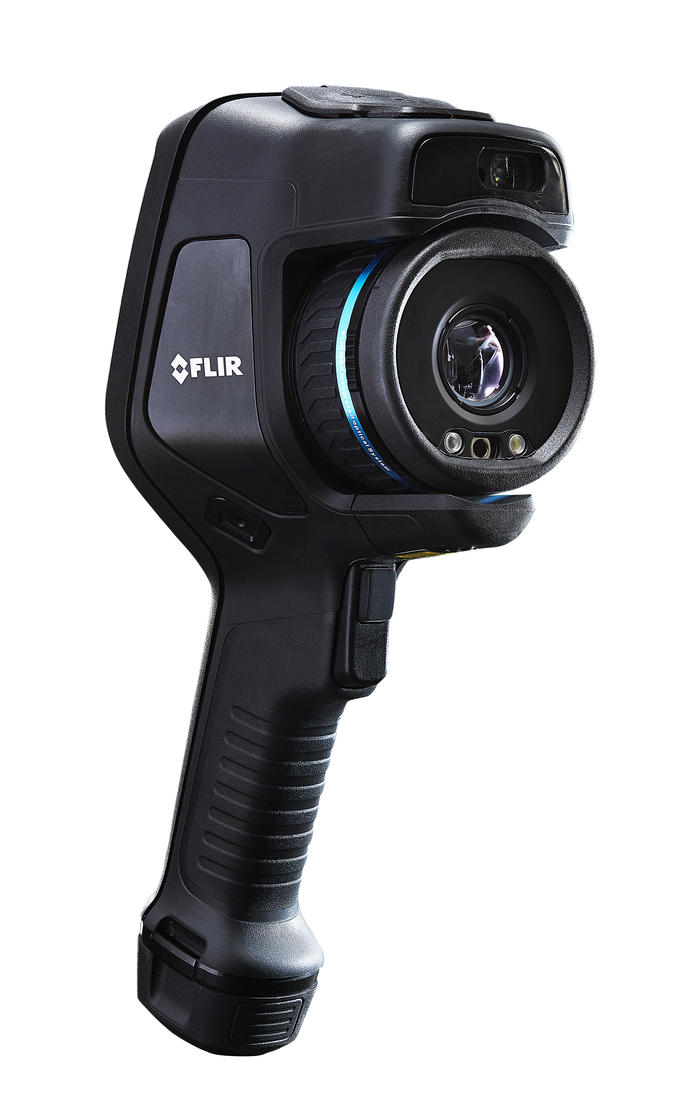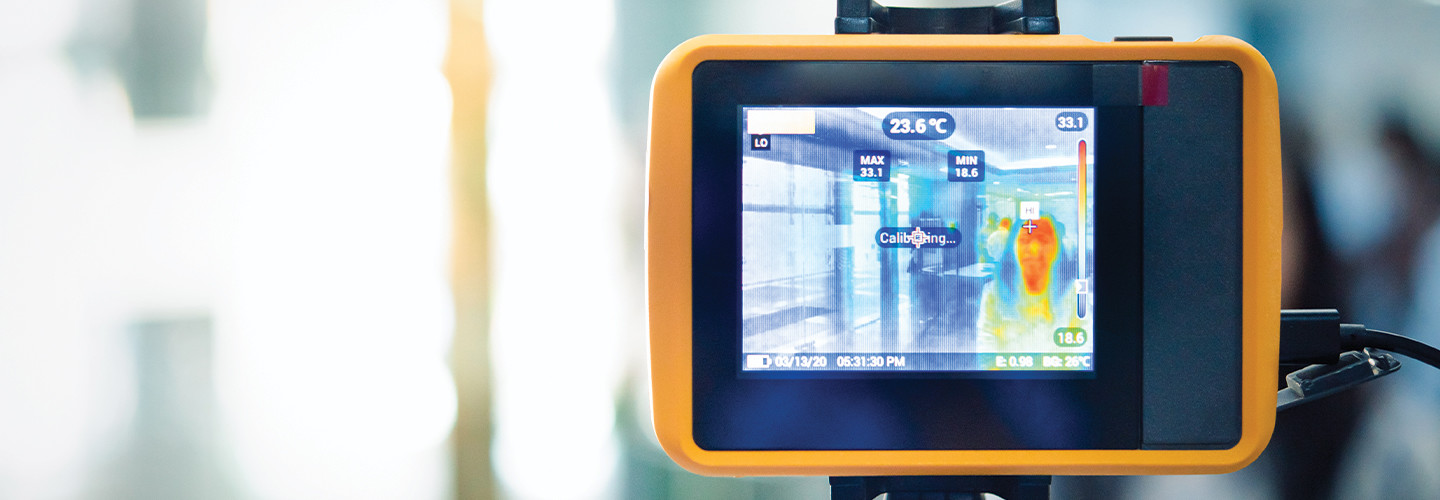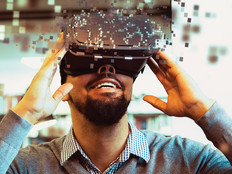What You Need to Know About Temperature Screening
The two main technologies school districts will likely adopt for temperature screening are thermal cameras and medical-grade thermometers.
Thermal cameras by themselves cannot detect fevers because thermal imaging is an imprecise method that cannot measure inner body temperature. That said, thermal cameras are useful for prescreening. After a thermal camera determines someone’s skin temperature is unusually high, a medical-grade thermometer — either a traditional oral thermometer or no-contact infrared device — can confirm if that individual has a fever.
“We see the thermal camera as the initial screening for processing people as they enter a building. These devices don’t detect fever, they just measure that surface skin temperature,” says Peter Frank, an education product manager at Ergotron. “But they can offer a quicker way to return to school versus having to temperature-check every individual as they enter the facility.”

Photo source: FLIR
The FLIR E95 thermal imaging camera, which can auto-calibrate.
To get a reliable surface reading, most thermal cameras must calibrate against a “black body,” an accessory that is usually sold with the camera. The camera indicates the difference between the subject’s and the black body’s predetermined temperature.
Not all thermal cameras require a black body, however. FLIR Systems, for instance, offers a self-calibrating version of its temperature scanner. “Our camera is stable and accurate enough to function despite all these different environmental factors,” says Chris Bainter, vice president of business development at FLIR.
Still, school leaders should understand that thermal imaging can’t detect other symptoms or conclusively confirm COVID-19, as some infected people may be asymptomatic.
DISCOVER: Learn about school districts’ reopening plans for the fall.
Keep These Factors in Mind Before Using Thermal Cameras
While selecting thermometers is a relatively straightforward matter, there are more factors to consider when choosing thermal cameras. School leaders should ask key questions, such as: How easy is it to operate? How accurate is the output? How many people can it scan, and at what speed?
At Costar Video Systems, Vice President of Product Management Jeff Cullop points to the wide variations in distance requirements. Some cameras need the operator to be within a few feet of the subject, while Costar’s offering works from 18 feet away. That’s a major factor to consider, especially for schools that may conduct daily screenings from a safe distance at entry points.
Hikvision, likewise, offers both handheld and stationary cameras. Handheld devices can operate from 3 to 6 feet away, while stationary cameras can prescreen individuals from up to 23 feet away. “Prescreening takes less than one second, is highly accurate and there is no need for close contact,” says Doug Gray, Hikvision’s senior product marketing manager.
At the end of the day, accuracy is the key criterion. The Food and Drug Administration has established guidelines for ensuring the precision of medical temperature screening solutions. For example, body temperature measurements should not be off by more than 0.9 degrees Fahrenheit. But the guidelines are nonbinding, and not all devices meet the mark. “They may be plus or minus as much as one and a half degrees, and that won’t allow you to properly scan people,” Frank says.
Processing speed is also an important factor. “If it takes 10 seconds to scan someone in a high-volume area, that can create a bottleneck,” Frank says. “Then you have a risky situation.”












